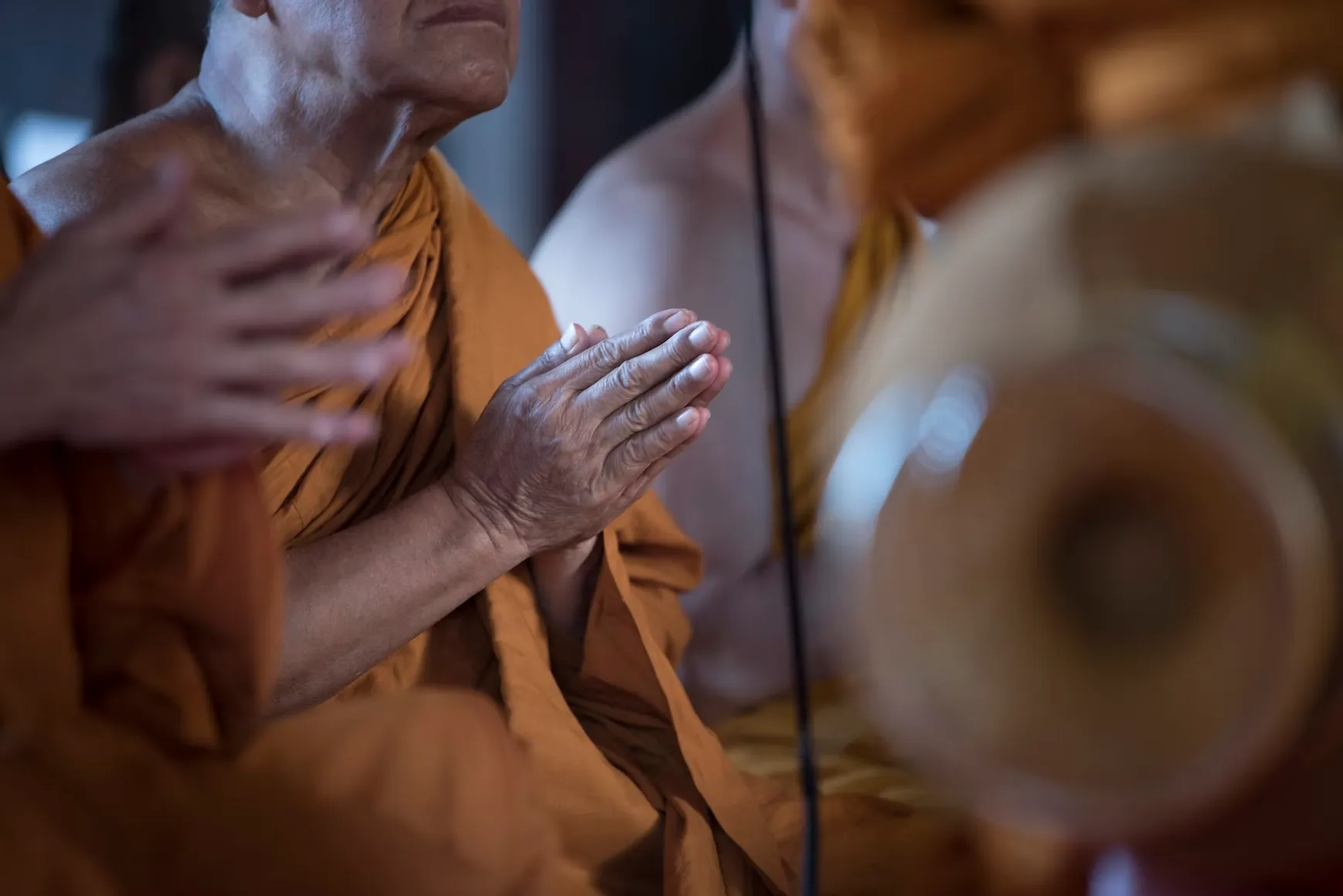

Both Yoga and Buddhism first originated in India, leading some to wonder how they each came to evolve and whether or not they are related. In fact, it’s common for people to confuse the two, since these ancient systems of philosophy were born thousands of years ago and feature complimentary beliefs. But despite areas of similarities, Yoga and Buddhism do contain some differences from one another.
To explain the similarities and differences between these ancient philosophies, we need to first go back in time to when they each started.
More than 2,500 years ago in India, the Buddhist religion was born from an ascetic and spiritual teacher named Siddhartha Guatama. Based on the tenets of the Four Noble Truths, this belief system was organized around mindfulness, meditation, and seeking enlightenment through the liberation from suffering and the ego.
However, before Guatama became the Buddha (which means “the awakened one”), he was a scholar and practitioner of yoga — which originated long before Buddhism. Yoga has been around for over 5,000 years, and unlike Buddhism, it actually isn’t considered a religion, but rather a practice that is derived from Hinduism. It can also be practiced by anyone regardless of their belief system or values.
Buddhist texts were among the earliest to teach the physical practice of Yoga, but Yoga was first mentioned in the “Rigveda,” an ancient collection of Hindu texts that existed long before. Here we see that Yoga influenced Buddhism, but the same can be said for Buddhism influencing Yoga.
For instance, meditation is a yogic technique used in Buddhism to achieve freedom from the ego and attain enlightenment — a shared goal between the two disciplines. And yet, the Hatha yoga technique actually draws its roots from Buddhism, and can be found in early Buddhist texts.
This shows us that even though Yoga and Buddhism are regarded as different, various elements of each are informed by the other.
[inline-CTA-1]

Both Yoga and Buddhism contain some similar philosophies, mindsets, and goals, which make these systems complimentary in many ways. More than anything, their similarities show how intertwined they really are.
These are some of the beliefs shared by the Yoga tradition and Buddhist religion:
Yoga and Buddhism also both contain sub-varieties and different forms of practice. There are some yogic or Hindu Gods and Goddesses that appear in some Buddhist traditions, and they each acknowledge the principle of dharma as the true reality or cosmic law.
It’s easy to see why Yoga and Buddhism get mistaken for each other. But there are still some pretty important differences between the two.
While many of the goals and philosophical beliefs of Yoga and Buddhism share similarities, these two systems have been regarded as fundamentally separate for thousands of years.
Why is that?
It all comes down to the foundations of Yoga and Buddhism. The basic underlying principles of Yoga come from Hinduism, with a belief of an inner Self, or “Atman,” and a God who created the universe.
Buddhism, on the other hand, asserts that the Self does not exist, and neither does God — maintaining both are inventions of the mind.
There are also distinctions between the two when it comes to the physical realm. Yoga concerns itself with the body, using it as a tool to energetically align the chakras and achieve enlightenment. It was conceived as a preparation for the body to engage in the act of sitting in meditation for long periods of time.
Buddhism focuses on the psychological aspect of enlightenment — what we do and how we transform once we are seated in meditation.
In a nutshell, there are elements of Yoga that are integrated with Buddhism, like meditation and Hatha yoga. But if we look at the history of Yoga and Buddhism, the practice of Yoga was first derived from Hinduism, and maintains its Hindu roots even still today.
With so much crossover between Yoga and Buddhism, is it possible to practice both at the same time? Or must we choose one path over the other?
With such fundamental differences between the two systems regarding belief in the existence of Self and God or creator, it may not be possible to completely adhere to the philosophical contexts of Yoga and Buddhism at the same time. Though following one and completely excluding the other isn’t altogether necessary.
Both Yoga and Buddhism are systems designed to bring you inner peace, harmony, compassion, and forgiveness of yourself and others. These ancient traditions have proved themselves for thousands of years as means to achieve self-realization and enlightenment through the yogic method of meditation.
So, if you’re wondering where to start on your own journey, the simple practice of meditation can help you discover your path. And if it leads in the direction of Buddhism, or if you identify more with the spiritual teachings of Yoga, it is yours to decide.

All of this discussion of self-realization, enlightenment, non-attachment, and karma can be intimidating if you’re just getting familiar with the spiritual foundations of Yoga and Buddhism. But if we look at the shared, common tool of meditation, we have something concrete and actionable with which to embark on our personal journeys toward freedom from suffering.
Meditation in and of itself is the simple act of quieting the mind in order to develop awareness and transcendence of ego. But in our modern day lives of distractions, responsibilities, stress, and trauma, that might be easier said than done. Meditation is called a “practice” because it requires just that — practice. The physical Yoga asanas were first conceived to allow practitioners to sit in practice for longer durations, thereby enabling them to further hone their ability to achieve inner bliss.
Anyone can meditate, and you don’t have to be experienced or knowledgable in Yoga or Buddhism to start incorporating this effective tool into your everyday life. Aside from being a core teaching in Buddhism and Yoga, meditation also offers an array of benefits for your physical and mental well-being.
Here are just a few of the ways meditation can impact your life:
There are many types of meditation you can try in conjunction with your yoga practice. With online classes available at MyYogaTeacher, you can learn about meditating at your own pace and in the comfort of your own home. Sign up for a free 3-day trial at MyYogaTeacher to discover how meditation can change your life. Once you’ve become familiar with the basics, you can choose a path that aligns with your goals — whether it’s Yoga, Buddhism, a combination of the two, or a completely different set of beliefs.
What matters most is the journey itself, and the benefits that Yoga, Buddhism, and meditation can bring to your everyday life.
Get started today at MyYogaTeacher

Receive personalized guidance tailored to your unique fitness goals, live with a dedicated coach—no credit card required.